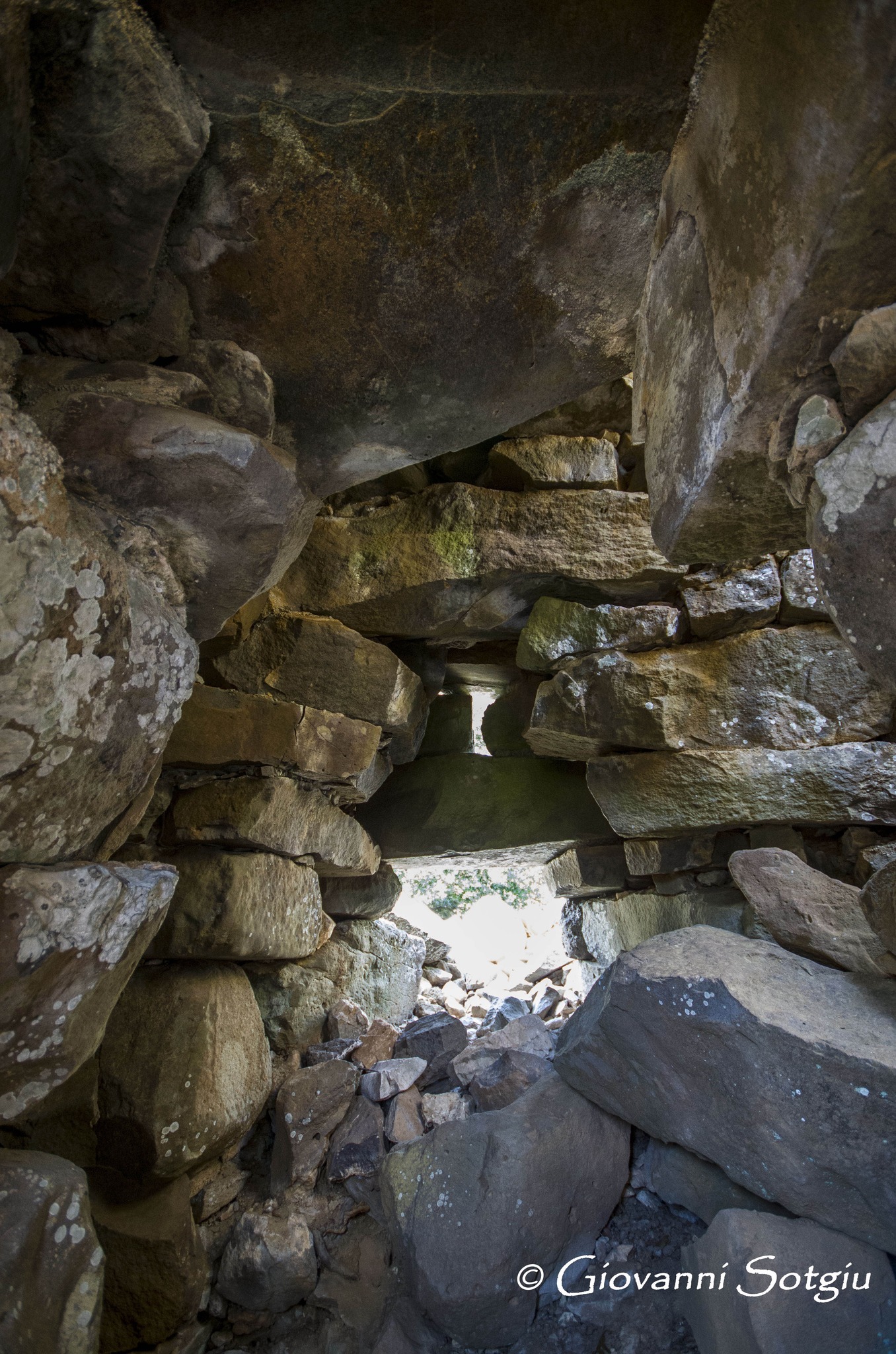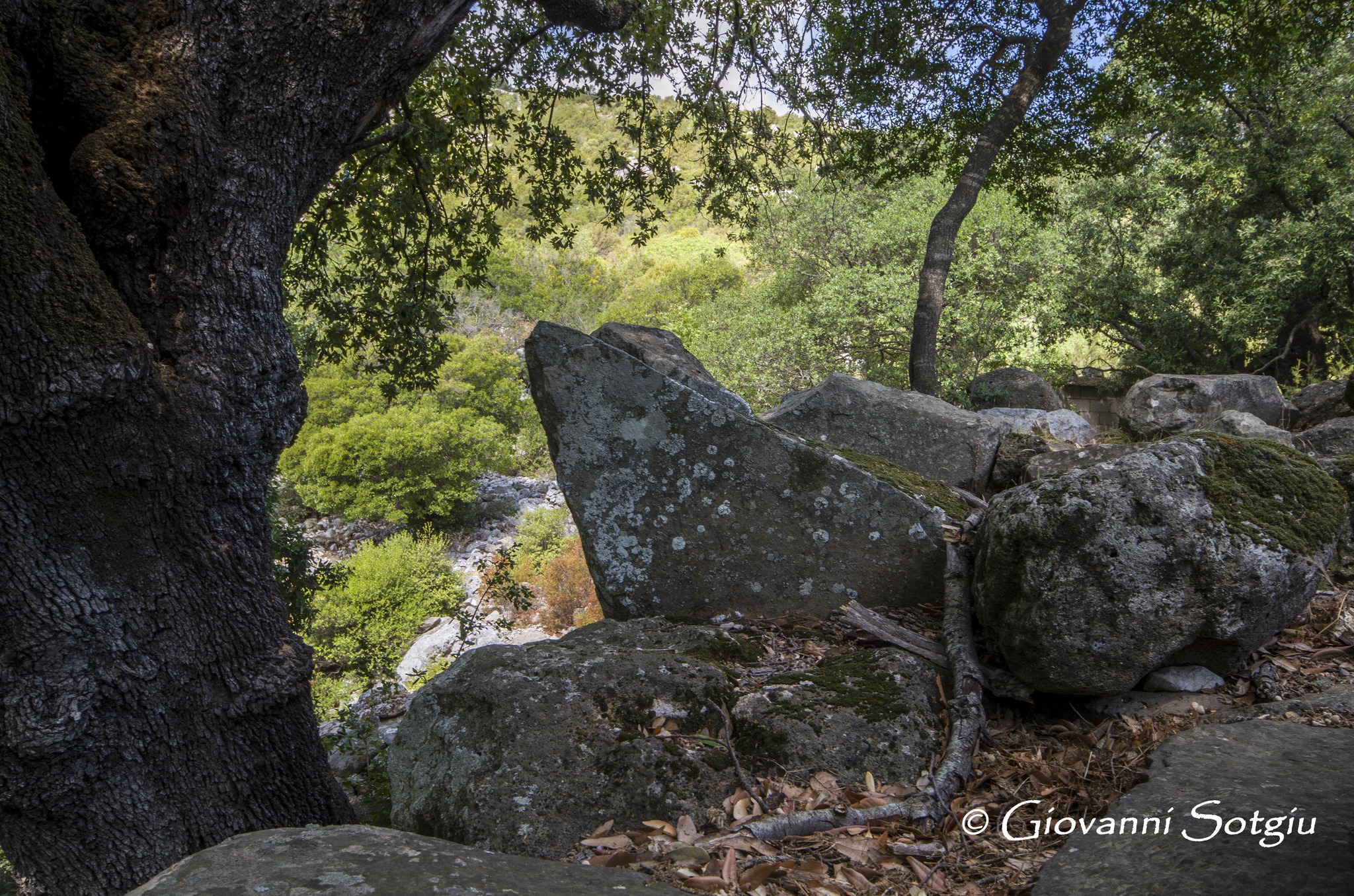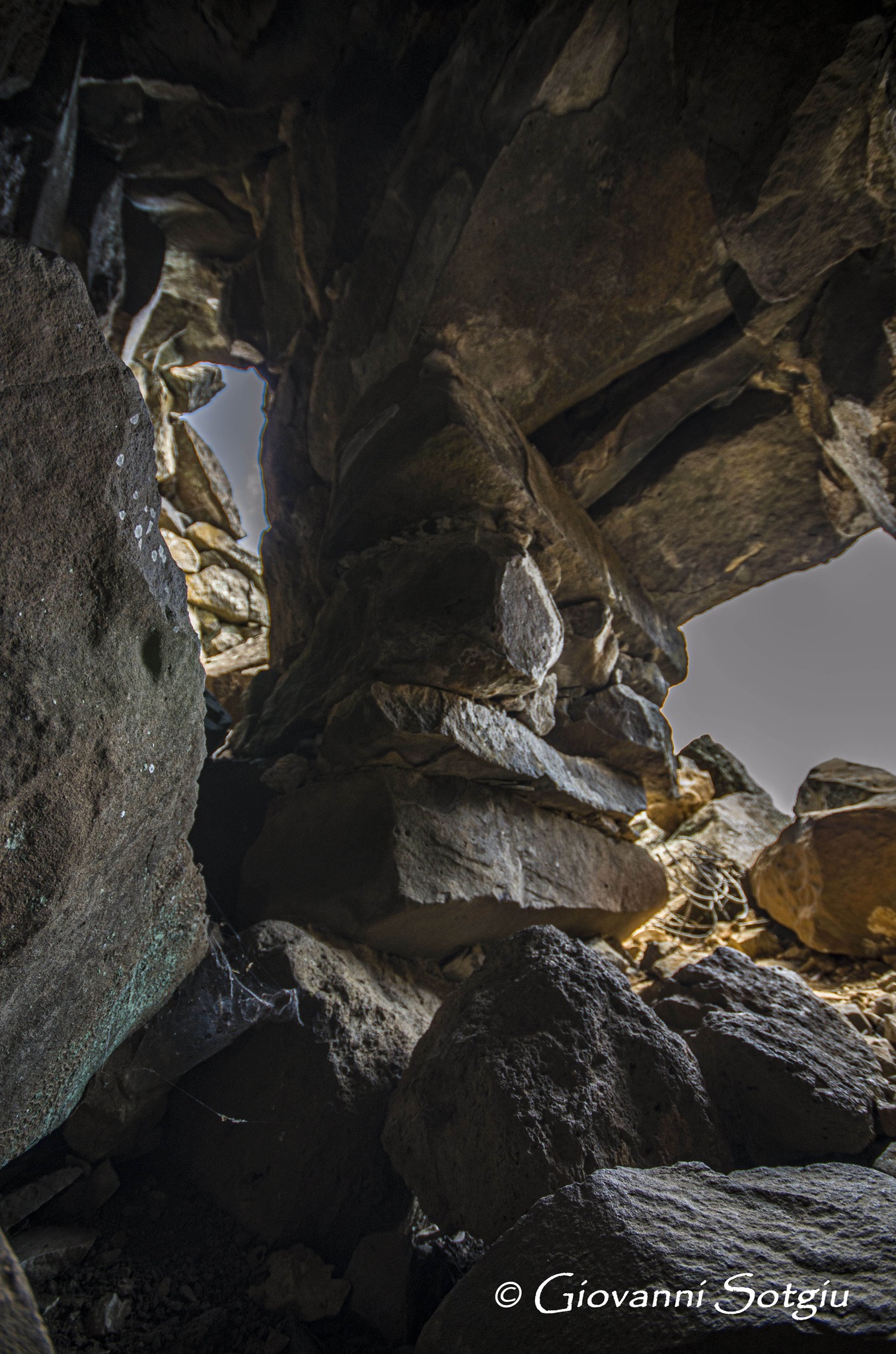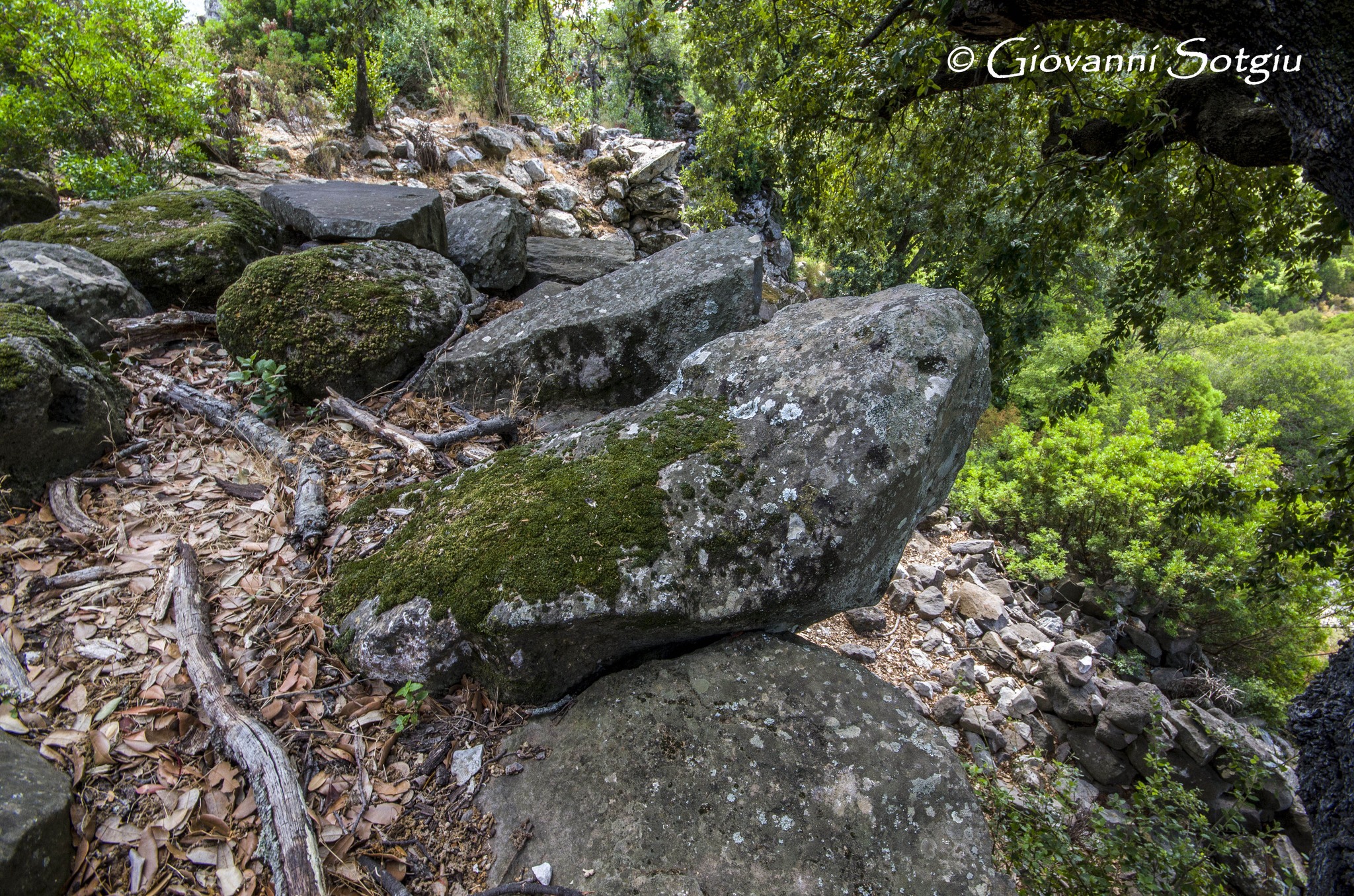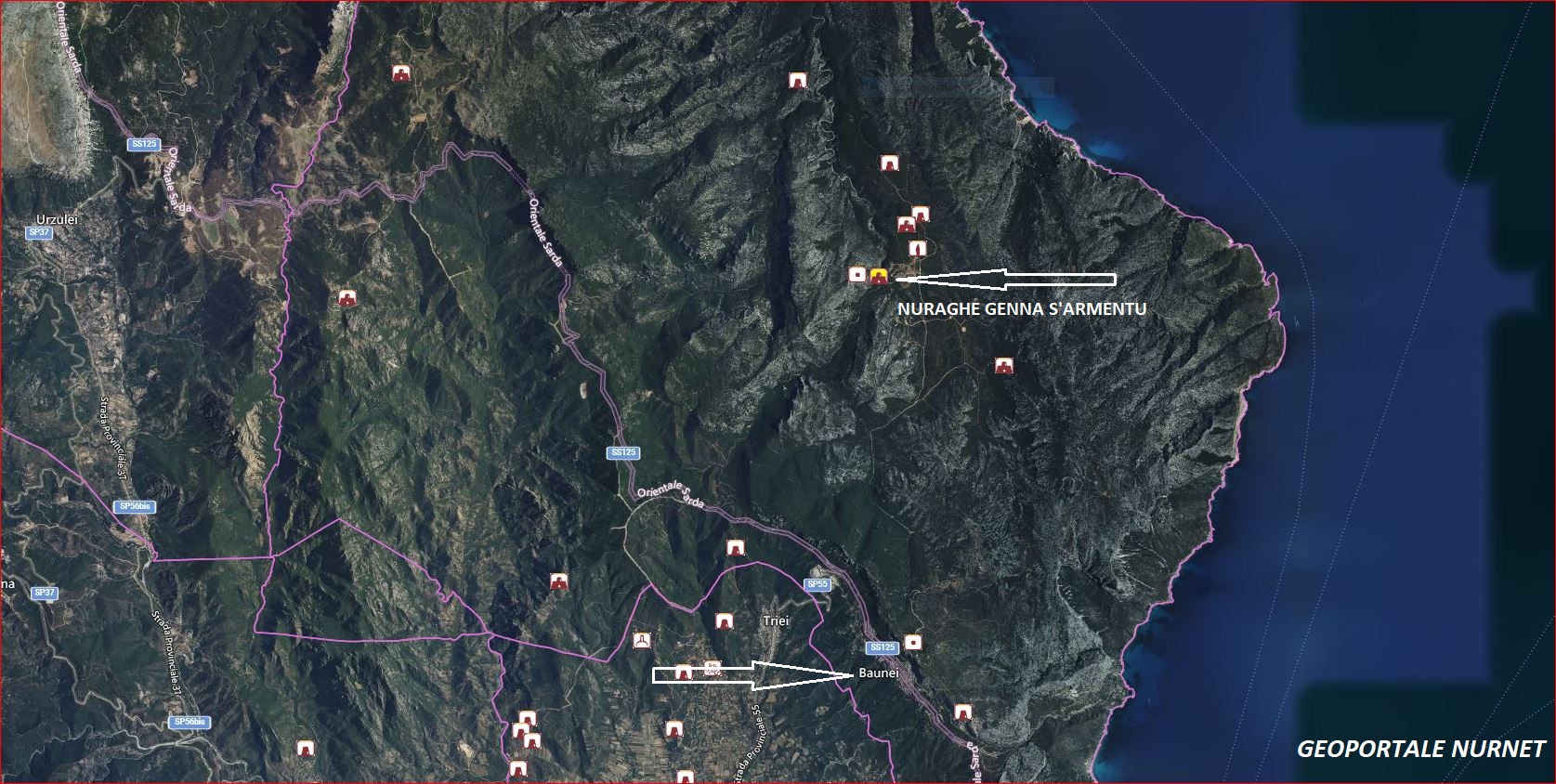The stone mask seems almost to guard the nuraghe Genna S’Armentu of Baunei, as told on the site turismobaunei.eu:
“The Nuraghe of ‘Genna S’armentu’ is usually indicated in tourist guides as ‘Nuraghe Alvo’, a name that also appears on the maps of the Military Geographic Institute. In Baunei, however, it is a common opinion that the compilers of the IGM maps have made an error, leading to a cartographic-toponymic misunderstanding that still persists. The uncertainties about which name to use for this nuraghe were also emphasized by the archaeologist Francesco Manconi Quesada, who in 1992 studied the structure in depth, considered very important by archaeologists because it still retains twelve nuragic shelves in their original position. “On the exact identification of the nuraghe – writes Manconi Quesada – doubts may arise. In fact, in the Archaeological Map of Taramelli, the nuraghe is referred to as ‘Sa Tiria’ or ‘Coa Nuraghe’, << of rectangular plan… constructed of trachytic and limestone stones >>. With the name ‘Alvo’, the author [Taramelli] refers to another monument, reduced to << a pile of limestone boulders two meters high without any trace of a chamber >>.” Currently, the nuraghe is surrounded by Mediterranean scrub, but the imposing original structure that it must have been is still clearly identifiable. It is a complex nuraghe, made of basalt blocks, that towers over a hill from which the central part of the Golgo plateau can be glimpsed. The peculiar characteristic of this nuraghe is undoubtedly the presence of the twelve “shelves” that are still clearly identifiable. To fully understand the archaeological value of these “nuragic shelves,” the illuminating words of Manconi Quesada are once again useful: “It is now established that the nuraghi, or at least the complex ones, had a protruding terrace crown from the profile of the towers and curtains. The presence of such an architectural element is documented by numerous models of nuraghi, in bronze, terracotta, and stone, by decorative elements of bronze boats and ceramics from the nuragic age […]. The existence of protruding terraces is also proven, as Lilliu masterfully demonstrated as early as 1952, by blocks with the typical shape of irregular pentagons, trapezoids, triangles, or indeterminate shapes, called ‘shelves’, ‘large shelves’, or ‘beccattelli’. What must have been the central tower of the nuraghe is preserved to a height of over five meters, towering over the added body that according to archaeologists presumably enclosed a courtyard. In the central tower, the architrave and the so-called ‘drain window’ made of well-squared blocks are still clearly visible.
The photos of the nuraghe Genna S’armentu are by Giovanni Sotgiu.







